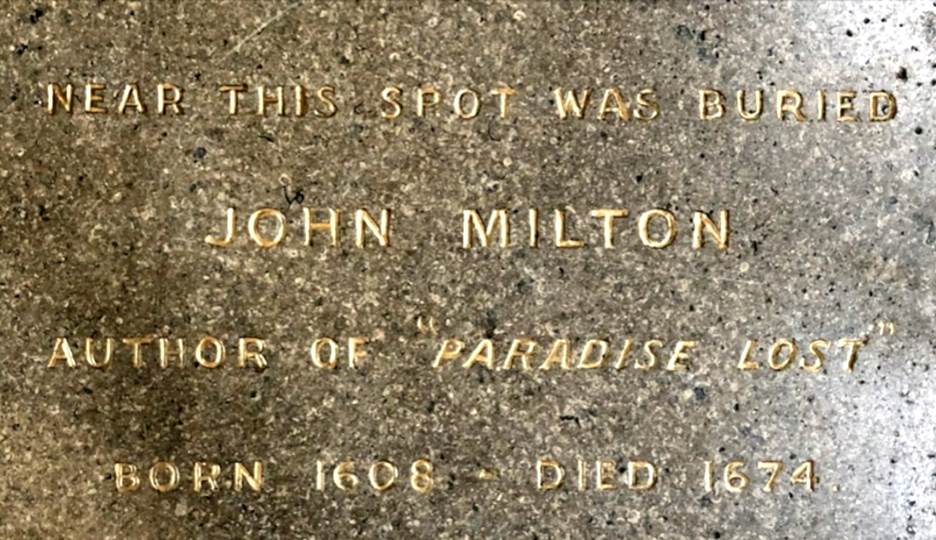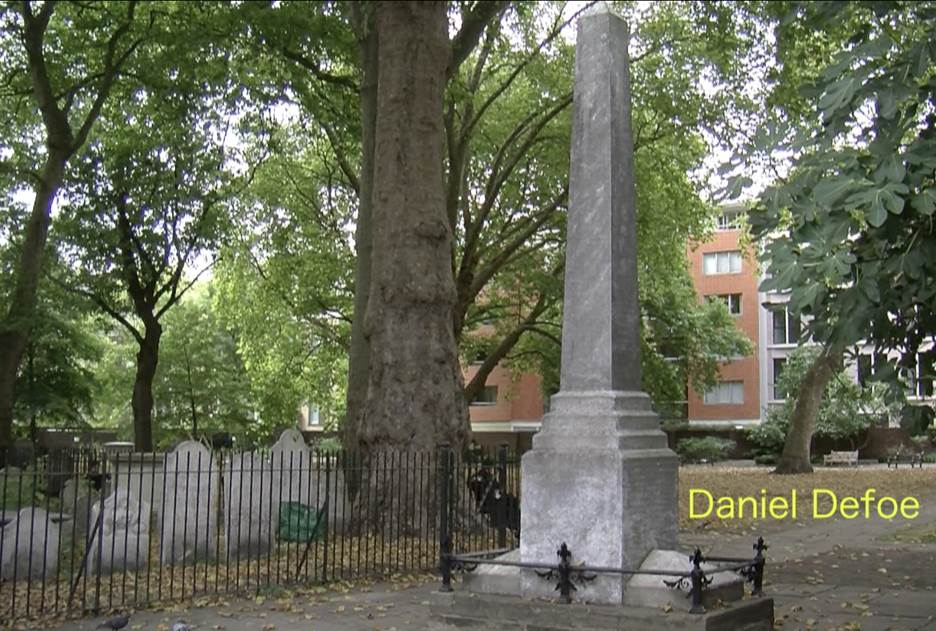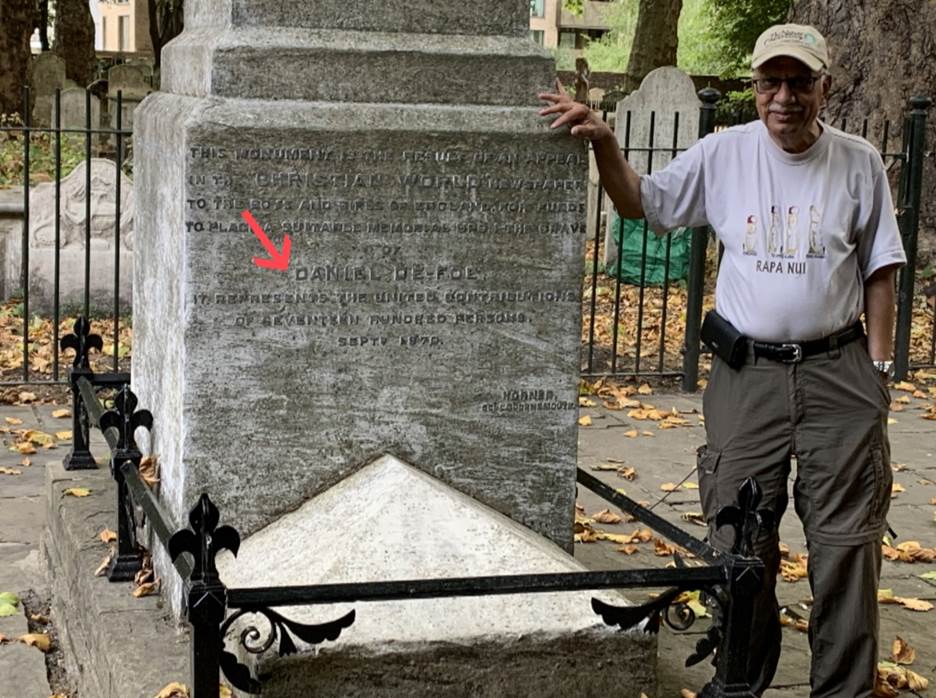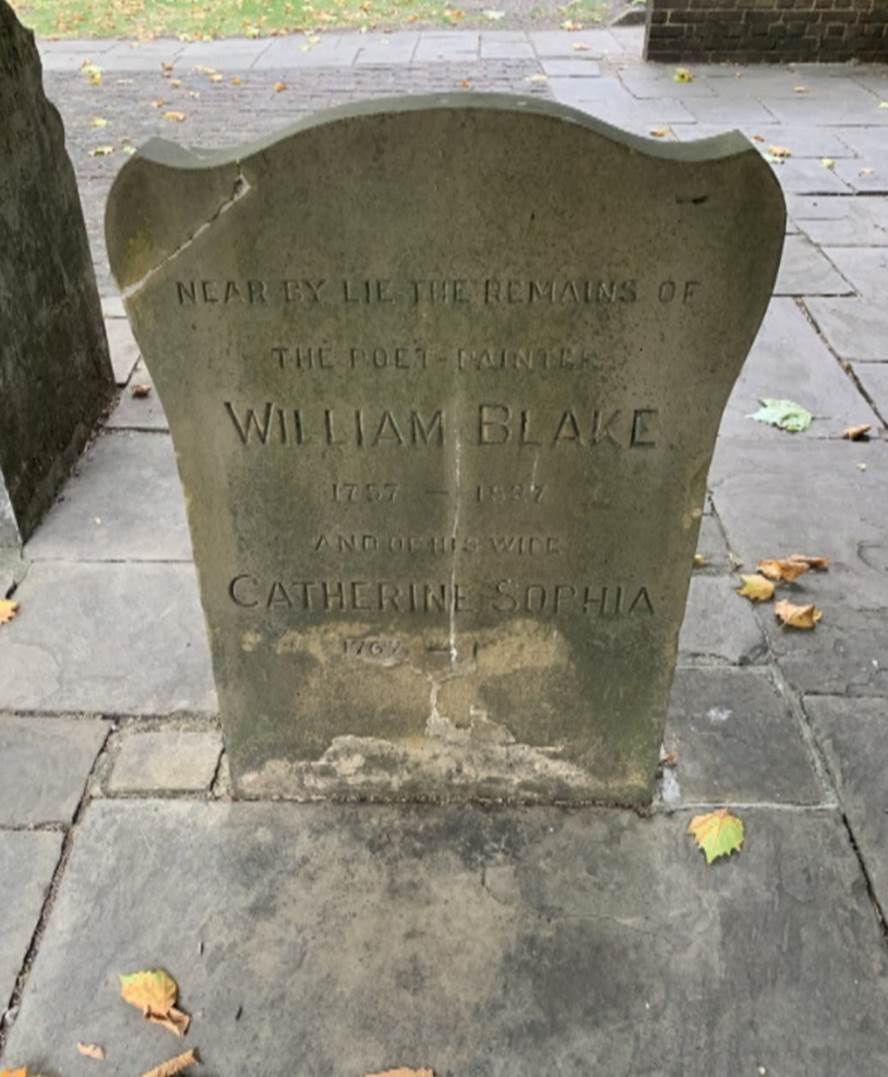
Three Literary Figures of England Buried outside the Westminster Abbey
By Dr Khalid Siddiqui
Ohio

While most of the literary figures buried in London are in Westminster Abbey, three are buried outside the abbey. These three are John Milton, William Blake, and Daniel Defoe.
John Milton
He was one of the best-educated English poets. He knew many languages and had traveled throughout Europe. At age 44 he became totally blind. Some of his best masterpieces like Paradise Lost and Paradise Regained were written around that time. In 1674, he died of kidney failure at the age of 66. He was buried in the Church of St Giles-without-Cripplegate, north of the city of London.
There is no actual tomb to visit but just a plaque over the site where he was buried. In 1790, during the renovation of the church his body was exhumed. Portions of his bones, hair and teeth were removed and examined. Some were taken away by the examiners as souvenirs.
Daniel Defoe & William Blake
In the 17 th century, the dead in England were either buried in the consecrated grounds of the Church of England or in their ancestral properties. In 1665, a common burial ground was needed to bury the victims of plague. Bunhill Fields, located just north of London, was a public garden.
The City of London decided to use a part of this garden for this purpose. During that time another issue was the burial of the nonconformists, i.e., the Protestant Christians who didn’t belong to the Church of England. They couldn’t be buried in the cemeteries consecrated by either the Catholic church or the Church of England. Bunhill Fields, thus, became a logical choice of interment of the Protestant nonconformists. Many literary figures including Daniel Defoe (died 1731) and William Blake (died 1827) were buried there. Between 1665 and 1854 approximately 123,000 burials were estimated to have taken place there. It was closed as a burial ground in 1860. As Burnhill Fields was not affiliated with any church, it was poorly maintained. During WWII, anti-aircraft guns were deployed at this site. It, therefore, was bombed heavily by the German planes causing severe damage to the tombs.


Daniel Defoe , the author of Robinson Crusoe, died in 1731 and was buried there. Later his wife and their daughter were also interred there. As Defoe died penniless, a simple headstone marked his grave. In 1857/58, his grave was struck by lightning which broke the headstone. A children’s newspaper, Christian World, appealed for donations of sixpence by the children for the creation of a monument to Defoe. £200.00 were raised. It was decided to erect a marble obelisk at the site.
At the time of laying down the foundations in 1869, several skeletons were unearthed. There was a mad rush by the onlookers to grab the bones as souvenirs. The police had to be called in to restore order. The unveiling ceremony of the obelisk on September 16, 1870, was attended by three of Defoe’s great-granddaughters. (See the photographs.)

William Blake was a poet and painter. He died in August 1827. In the 1960s, Bunhill Fields was landscaped. Unfortunately, his tomb was located in the area that needed to be cleared of gravestones. So, his headstone was moved twenty yards to the present location next to the monument of Daniel Defoe. (See the photograph.)
Although the City of London Corporation claims to maintain the ground, the whole place is in ruins due to negligence. I saw weeds and shrubs all over, even growing between the graves, and most of the headstones were broken or missing. Some of the tombs were completely covered by green moss.

